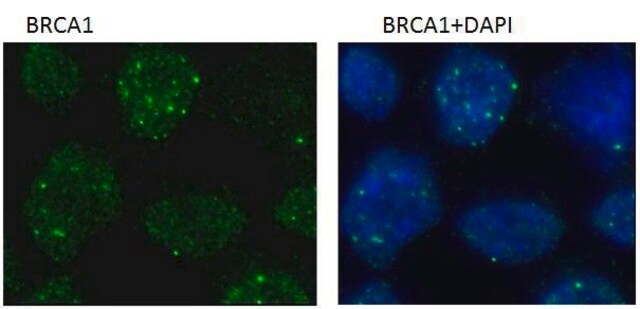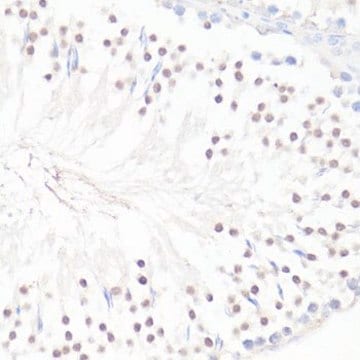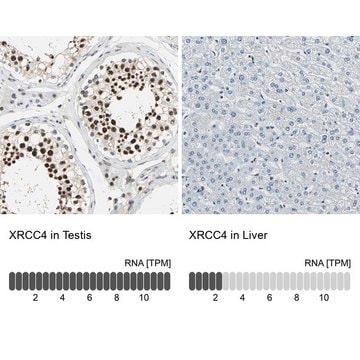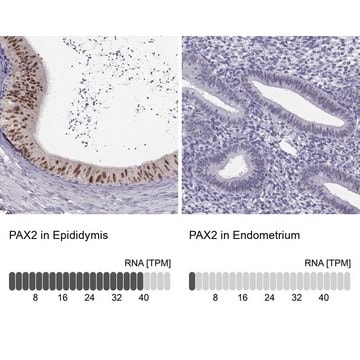05-1572
Anti-MDC1 Antibody, clone P2B11
clone P2B11, from mouse
Sinónimos:
Nuclear factor with BRCT domains 1, homologue to Drosophila photoreceptor protein calphotin, mediator of DNA damage checkpoint 1
About This Item
Productos recomendados
biological source
mouse
Quality Level
antibody form
purified immunoglobulin
antibody product type
primary antibodies
clone
P2B11, monoclonal
species reactivity
mouse
species reactivity (predicted by homology)
chimpanzee (based on 100% sequence homology), bovine (based on 100% sequence homology), human (based on 100% sequence homology)
technique(s)
immunocytochemistry: suitable
western blot: suitable
isotype
IgG1κ
NCBI accession no.
UniProt accession no.
shipped in
wet ice
target post-translational modification
unmodified
Gene Information
human ... MDC1(9656)
mouse ... Mdc1(240087)
General description
Specificity
Immunogen
application
Western Blot Analysis: A representative lot was used by an independent laboratory in WB. (Lou, Z., et al. (2003). Nature. 421(6926):957-961.)
Target description
Physical form
Other Notes
Not finding the right product?
Try our Herramienta de selección de productos.
Storage Class
12 - Non Combustible Liquids
wgk_germany
WGK 1
flash_point_f
Not applicable
flash_point_c
Not applicable
Certificados de análisis (COA)
Busque Certificados de análisis (COA) introduciendo el número de lote del producto. Los números de lote se encuentran en la etiqueta del producto después de las palabras «Lot» o «Batch»
¿Ya tiene este producto?
Encuentre la documentación para los productos que ha comprado recientemente en la Biblioteca de documentos.
Nuestro equipo de científicos tiene experiencia en todas las áreas de investigación: Ciencias de la vida, Ciencia de los materiales, Síntesis química, Cromatografía, Analítica y muchas otras.
Póngase en contacto con el Servicio técnico







